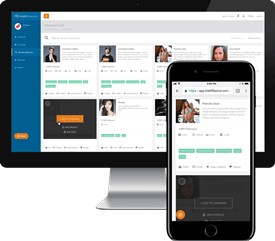Influencer marketing continues to evolve rapidly, and one of the latest and most sophisticated strategies brands and creators are utilizing is influencer whitelisting. But what is whitelisting, particularly in the context of social media, and how does it differ from traditional influencer partnerships? Understanding creator whitelisting can empower both influencers and brands to make more informed, lucrative decisions about their collaborations.
What is Whitelisting in Social Media?
Whitelisting, specifically influencer whitelisting, involves influencers granting brands permission to run paid advertisements through the influencer’s social media profiles. Unlike a simple sponsored post or a traditional influencer partnership where influencers themselves publish the content organically, whitelisting allows brands to directly manage and promote content from the influencer’s social accounts.
This arrangement typically involves the influencer posting content, after which the brand leverages advertising tools provided by platforms like Facebook, Instagram, and TikTok to amplify the reach of these posts. The content thus appears as sponsored ads under the influencer’s profile, increasing visibility and effectiveness by targeting precise audience segments.
Differences Between Influencer Whitelisting and Traditional Influencer Marketing
Traditional influencer marketing generally revolves around an influencer creating and sharing content on their own platforms organically. Influencers typically retain full control over the distribution, frequency, and engagement with their audience. Conversely, branded content authorization involves the brand having direct control over the promotion and targeted advertising of that influencer-created content.
Key Differences:
- Content Control: Traditional influencer marketing leaves content posting and timing to influencers, while whitelisting gives brands direct control over distribution.
- Audience Targeting: Whitelisting allows precise targeting through paid ads, reaching specific demographics far beyond an influencer’s organic audience.
- Performance Data: Whitelisting provides detailed metrics from ad campaigns, offering deeper insights than organic influencer posts.
Pros and Cons of Creator Whitelisting
Pros:
- Expanded Reach and Precision: Whitelisting campaigns leverage targeted ads, significantly increasing potential reach and engagement.
- Enhanced Credibility: Ads appearing as sponsored content from influencers feel more authentic and trustworthy than brand-only ads.
- In-depth Analytics: Detailed performance metrics help brands measure campaign success accurately.
- Greater ROI: Enhanced targeting typically leads to improved returns on investment.
Cons:
- Potential Loss of Control for Influencers: Influencers give up partial control over how their image and content are utilized.
- Audience Fatigue: Increased exposure to ads could lead to diminished authenticity or audience fatigue.
- Complex Negotiations: Contractual agreements become more complex, potentially involving detailed licensing terms and conditions.
Pros and Cons of Traditional Influencer Marketing
Pros:
- Influencer Autonomy: Influencers retain complete control over content and messaging, maintaining authenticity and audience trust.
- Organic Engagement: Authentic content generally receives more genuine interaction from followers.
- Simpler Agreements: Contracts and agreements are generally straightforward and easy to manage.
Cons:
-
- Limited Reach: Organic content is restricted primarily to the influencer’s follower base.
- Less Precise Targeting: Brands cannot directly target specific audience segments with organic influencer posts.
- Limited Analytics: Organic posts offer fewer insights into audience engagement and performance metrics.

Featured Influencer: Imogen Thorpe
I’m a 25 year old hair and make-up artist working within the incredible world of fashion. With nearly 10k followers on my instagram page, I’m open to an audience of young women who love hair and make-up, This would be the perfect place to showcase any brands working with hair and beauty related products.
Determining if Whitelisting is Lucrative for Influencers
Influencers considering whitelisting must evaluate several critical factors to ensure adequate compensation and maintain their brand’s integrity:
- Fair Compensation:
Influencers should negotiate fees that account for both content creation and additional rights provided via whitelisting. Compensation models may include flat fees, licensing fees, or performance-based bonuses tied to ad performance.
- Brand Alignment:
Influencers must carefully select brands that align with their personal values, brand identity, and audience expectations to avoid potential backlash or audience disillusionment.
- Duration and Scope of Campaign:
Longer campaigns or broad usage rights should command higher fees. Clearly define the duration, usage, and geographical scope of whitelisting agreements to protect influencer interests.
- Impact on Audience Relationship:
Consider the potential impact of increased promotional content on your relationship with your audience. Ensuring authenticity remains central to maintaining audience trust.
Why Brands Consider Creator Whitelisting
Brands often opt for creator whitelisting due to several strategic advantages:
- Advanced Audience Targeting:
Brands leverage detailed demographic and behavioral targeting tools offered by social media platforms, maximizing campaign effectiveness.
- Increased Credibility and Authenticity:
Advertisements delivered through influencers’ profiles enhance trust and credibility, driving higher engagement compared to traditional brand ads.
- Better Performance Metrics:
Whitelisting campaigns provide extensive data analytics, helping brands refine strategies and optimize future campaigns effectively.
- Cost-Efficiency:
Effective targeting and improved ad performance often yield a higher return on investment compared to broader advertising methods.
- Scalable Campaigns:
Brands can efficiently scale campaigns across multiple influencer accounts simultaneously, expanding their reach considerably.
Intellifluence allows brands to utilize influencer whitelisting, as long as this requirement is explicitly outlined in the campaign’s “Required Work” section.
Real-Life Examples of Creator Whitelisting
Brands such as Gymshark, Glossier, and Revolve frequently employ influencer ad permissions , leveraging their ambassadors’ social media profiles to run highly targeted campaigns. For example, Glossier often boosts content from micro-influencers, significantly amplifying their reach and generating highly engaged new audiences.
Understanding what branded content authorization involves and how it differs from traditional influencer marketing can help both influencers and brands optimize their collaboration strategies. While whitelisting provides robust opportunities for expanded reach, targeted engagement, and deep analytics, it requires thoughtful negotiation and alignment between influencers and brands. Influencers must ensure they are adequately compensated, and brands must clearly outline expectations and campaign objectives to maximize the mutual benefits of influencer licensing.

SallyBot is committed to helping users get the most out of Intellifluence. By helping brands create campaigns, providing unparalleled customer service and offering useful advice, nothing makes SallyBot happier than hearing she is liked… Really, really liked.






